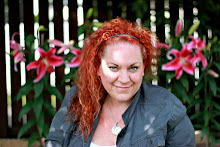History
Historically, most women gave birth at home without medical intervention. These births were generally attended by a midwife, local family physician, or members of the birthing woman's family. At the onset of the Industrial Revolution in the 19th century, giving birth at home became more difficult due to congested living spaces and dirty living conditions. This drove urban and lower class women to newly available hospitals, while wealthy and middle-class women continued to labour at home.
In the early 1900s there was an increasing availability of hospitals, and more women began going into the hospital for labour and delivery. In the United States, the middle classes were especially receptive to the medicalization of childbirth, which promised a safer and less painful labour. In fact, the ability to labour without pain was part of the early feminist movement.
With this change from primarily homebirth to primarily hospital birth came changes in the care women received during labor: although no longer the case, in the 1940s it was common for women to be routinely sedated and for babies to be delivered from their unconscious mothers with forceps (termed by Dr. Robert A. Bradley as "knock-em-out, drag-em-out obstetrics"). Other routine obstetric interventions have similarly come and gone: shaving of the mother's pubic region; mandatory intravenous drips; enemas; hand strapping of the laboring women; and the 12 hour monitoring of newborns in a nursery away from the mother.
Beginning in the 1940s, childbirth professionals began to challenge the conventional assumptions about the safety of medicalized births. Physicians Michel Odent and Frederick Leboyer and midwives such as Ina May Gaskin pioneered birthing centers, water birth, and safe homebirth as alternatives to the hospital model. Research has shown that low-tech midwifery provides labor outcomes as good as those found in hospital settings with fewer interventions, except for a small percentage of high-risk cases. Today natural childbirth is taught through a variety of childbirth classes and books.
Back to Basics
Natural childbirth aims to maximize the innate birth physiology and labouring movement of healthy, well-nourished women.
Many women consider natural birth empowering. A woman who is supported to labour as she instinctively wants to, is a woman who will likely feel positive about her birth experience and future parenting skills. Her baby is more able to be alert and placed on her skin (promoting maternal bonding) and breastfeeding is more likely to be enjoyable and successful.
A variety of methods are implemented during natural childbirth to aid the mother. Pain management techniques other than medication include hydrotherapy, massage, relaxation therapy, hypnosis, breathing exercises, vocalization, visualization, mindfulness and water birth. Other approaches include movement and different positions (i.e. using a birthing ball), hot and cold therapy (i.e. using hot compresses and/or cold packs), and receiving one-on-one labour support like that provided by a midwife or doula.
Some methods used to augment labor without medication include changing positions frequently, remaining in an upright position to increase pressure of the baby on the cervix, and walking or walking up and down stairs. Methods to reduce the need for an episiotomy include managing the perineum with counter-pressure, hot compresses, and pushing the baby out slowly.
Preparation
Some women take birth education classes such as Bradley Method or Hypnobirthing to prepare for a natural childbirth. Several books are also available with information to help women prepare. A midwife or doula may include preparation for a natural birth as part of the prenatal care services.
Saturday, June 11, 2011
Subscribe to:
Post Comments (Atom)





1 comments on "Natural Birthing Back to Basics"
Giving birth of baby is not an easy process for every woman, and these processes can be more painful when you going to birthing your baby naturally at home or any special place. Doubt and trust mp3 is the best thing for you to perform your natural birthing perfectly and efficiently, when you follow the guidance from there you will gain less pain during giving natural birth.
Post a Comment